I managed to catch the tail end of Fort Lauderdale, Florida’s Day of the Dead parade this year, and I was glad I did.
I’ve never been to a Day of the Dead celebration anywhere before. While Fort Lauderdale’s celebration has grown rapidly in recent years, this was the first time I happened to be in town for the festivities. It was a great party. There were lots of people, many in costumes and intricate face paint. There were great puppets, some elaborate (and large) enough that you might call them floats. Mariachi bands played festive music. While many of the attendees were Latino (Fort Lauderdale is largely a bilingual town anyway), in my observation the majority of them were not. Still, everyone enjoyed what was effectively a large, fun street festival, like those that mark various occasions throughout the calendar year.
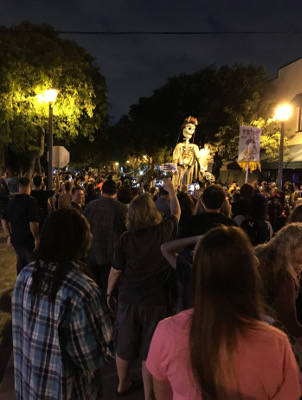
Day of the Dead celebration, Fort Lauderdale, Fla.
Photo by Larry Elkin.
I am delighted that my recently adopted hometown hosts a Day of the Dead celebration for me to share. I’ll be sure to spend more time there next year. But in Missoula, Montana – the town where I went to college and that I once considered my home – a similar shared celebration may be coming to an end.
This year marked the 25th anniversary of Missoula’s Festival of the Dead, a collection of events including art exhibitions, speeches, lectures and workshops centered on the themes of life, death and art. The celebration culminates in a parade, which in recent years has fallen on Nov. 2 – also the final day of the multi-day Dia de los Muertos, or Day of the Dead, celebration in Mexico and elsewhere.
While Missoula’s festival doesn’t technically use the name “Day of the Dead,” the connections are not coincidental. The event’s founders, two Montana artists, were inspired by a trip to Mexico and wanted to create a distinct but similar celebration that they called “a multicultural celebration of life, death and the arts.”
But because of growing national awareness of Day of the Dead, many locals informally call the festival parade by that name and have incorporated some of the more overt elements of the Mexican celebration. The parade that ends the festival also allows open participation, and some people choose to adopt face paint or costumes that more directly invoke the Mexican holiday. In recent years, these aspects of the festival led some to challenge it, labeling the proceedings as cultural appropriation. Festival organizers have been largely receptive to the issues raised by advocacy groups, but are finding it hard to balance reasonable discussion with heated rhetoric.
The parade went on as usual this year, though a sugar skull workshop and face-painting booths were canceled due to concerns that they crossed the line between celebration and disrespect. The Zootown Arts Community Center, which has organized the Festival of the Dead for the past six years, previously said it wants to incorporate a more educational component in the events leading up to the parade, to let Missoulians learn about the origins of the festival and the holiday that inspired it. Such changes are probably welcome, or at least not terribly burdensome. But they are not enough for some hardline protesters, including some who will not accept anything less than either the end of the festival or its renaming and relocation to a different time of year.
The day of the parade, Zootown Arts Community Center announced that it would no longer serve as the festival’s organizer and sponsor, leaving the event’s future unclear. While the nonprofit said it would help the festival board search for a new committee or other organization to make the event happen going forward, no one yet knows if there will be a Festival of the Dead in 2018 at all.
Certain self-appointed guardians of cultural correctness declared that Montana, with its tiny Mexican population, is somehow not entitled to celebrate a custom with its roots in the indigenous cultures of the tropical Americas. They may yet succeed in killing Missoula’s celebration, at least in its current form. But the Day of the Dead did not spring fully formed out of Mexican soil, or stay neatly confined there until a Montana artist visited in the 1990s. Day of the Dead celebrations go back some 3,000 years to the Aztec civilization. Spanish colonists attempted to quash the rituals, but instead they merged with imported Catholicism over time as the customs spread north throughout Mexico.
Today, Day of the Dead observances can be found around the world, from the Philippines to Guatemala, New Zealand and across the United States. For some people, both in Mexico and elsewhere, the focus is on the party, while for others it is a more solemn observance. For some the holiday retains a religious aspect, while others simply take the opportunity to offer tribute to loved ones who have died. Determining whether a given celebration is “traditional” or not is a tricky prospect, even for people of Mexican origin.
In fact, the entire idea of cultural appropriation is nonsense – a lever developed by modern-day puritans determined to tell everyone else not only what we may celebrate, but also when and how.
From the time the earliest cave dweller picked up a piece of charcoal and drew his world on a stone wall, cultures were meant to be shared, not hoarded. The Day of the Dead itself is an example of how cultural activities migrate and morph through place and time. There are countless others. The alphabet in which this post is written came from the Ancient Romans, who in turn borrowed some of those letters – and their pantheon – from the Ancient Greeks. Our numerals were the property of India, by way of the Middle East. The Phoenicians gave us many of our concepts for commerce and trade. Should we give them back? To whom?
There is a huge difference between celebrating and sharing another culture and disrespecting it. Much of that difference is embedded in context and intent. Christmas is an intensely holy day in the Christian calendar, celebrated by the faithful through church services and spiritual reflection. It is also celebrated with ugly sweaters and Santas in shopping malls. One practice does not detract from the other. The message of the holiday is spread in multiple ways. Even Jewish people have customary ways of celebrating Christmas: stereotypically, by going out for Chinese food and a movie. It is not a matter of disrespect. It is a way of secularizing and sharing an important day that straddles many cultural traditions. Christmas itself is arguably at least partially an appropriation of earlier winter solstice or Roman holiday traditions by the early Christian church.
If we’re going to be strictly proprietary about culture, what will we eat? Baguettes and pita are cultural icons that have been freely shared into the American diet. As for falafel, forget about it; even people from various Middle Eastern countries can’t agree on who takes the credit for that one. The list of foods that has migrated across cultures is endless.
They say everybody is Irish on St. Patrick’s Day. Columbus Day was a celebration of everything people from Italy brought to the New World, until lately when the guardians of the cultural galaxy decided to try to rebrand it as a glorification of oppression. Are we going to turn gay pride marches and rainbow symbols into the sole property of the gay and lesbian communities and place them off-limits to straight people? If the original point of those events was to promote acceptance and inclusiveness, reinforcing that beneath our surface differences we are still one community, it seems that some among us have lost the thread of the conversation. And they want to take it away from the rest of us too. It’s a shame that in certain places – frequently those closely linked to college campuses, like Missoula – today’s blue-noses declare so many forms of shared celebration off limits.
As Janaina Vieira-Marques, a Montana artist and Festival of the Dead board member, told the Missoulian, “The ancient Aztecs would see contemporary Dia de los Muertos celebrations in Mexico as an appropriation also, right? How far back do you go to determine what true ‘culture’ is?”
I haven’t lived in Missoula in decades. Its citizens can choose to celebrate the Day of the Dead, or not, however they want. I am happy to be in a place right now where hardly anybody seems intent on trying to suck the joy out of life. Or, in this case, the afterlife.
Day of the Dead celebration, Fort Lauderdale, Fla. Video by Larry Elkin.





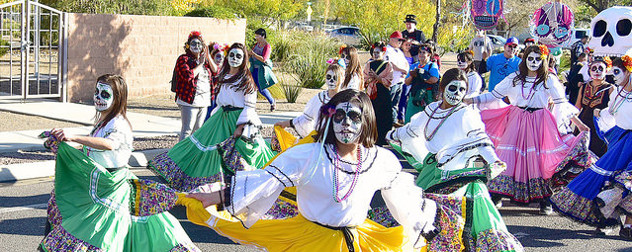
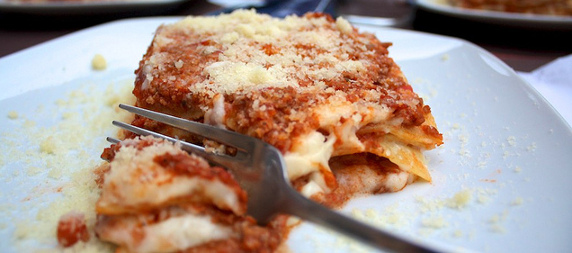

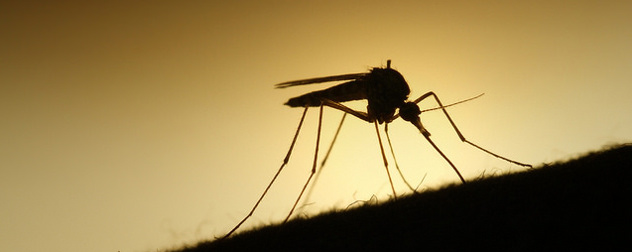
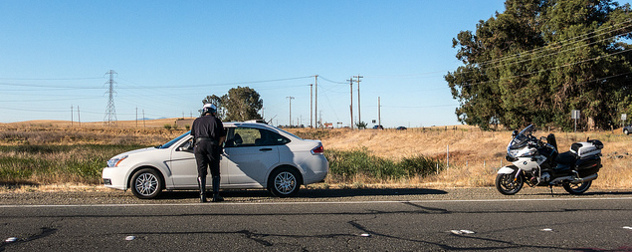
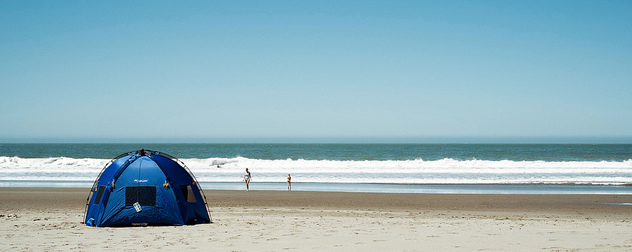
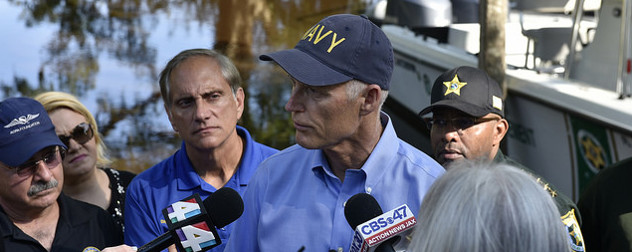



November 11, 2017 - 12:25 pm
Thanks for the interesting article, Larry. So glad you enjoyed the Day of the Dead Celebration in Fort Lauderdale. We also run community workshops throughout October that help celebrate and educate our community about the traditions of the Day of the Dead, such as folkloric dance, puppet workshops, Papel Picado and mask workshops. Hope Missoula manages to rectify their situation soon.